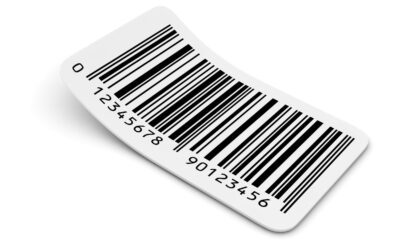Asset tracking gives your company a way to monitor its assets, how they behave and who is in control of them. What are assets? Assets are anything your business owns that isn’t sold: kit, equipment, fixtures, IT tools, assets are anything. As such, assets are not inventory and, therefore, inventory needs to be tracked differently.
Asset tracking software does help clear up a lot of asset tracking operations as, conventionally, a spreadsheet will be used to list all of the items your business owns. This creates gaps and difficulties, as spreadsheets are constantly out of date and need constant work to be kept useful.
Asset tracking software cuts down the amount of work you need to do and speeds up your existing operations, saving you time and money.
Which Industries Can Asset Tracking Help?
The best thing about asset tracking is that it isn’t industry-specific. This being said, there are specific features that are more tailorable to certain use-cases, but, so long as your business has assets, asset tracking can help.
Most commonly, asset tracking operations are used in industries such as the construction industry. If we use this as an example, the way asset tracking helps every industry becomes clear.
In the construction industry, assets need to go on sites and off sites and, therefore, must be tracked to make sure they’re not lost or misplaced. This is one use case where asset management shines as construction equipment tracking is possible through tagging and location tracking features.
Then, instead of thinking about construction assets, you can imagine asset management for films and television. Props need to move around as well as costumes and so, instead of a spanner moving from site to site, it becomes a tailored victorian dress. The features work in the same way for the same reasons.
How Does Asset Tracking Software Work?
Asset tracking software takes this concept and runs with it. The core of asset tracking software is that every asset is unique and traceable, and has unique information related to it.
Therefore, you can add any asset, whether it be an IT asset such as a laptop or phone, construction tools and equipment, medical equipment, movie props, stage assets, schools assets, anything. Then, you can add data to this asset.
The data you can add is customisable and helpful. This is how you bring your assets’ profiles to life, as adding pricing information, images, costs and so on is what you’ll be using and exporting in future.
The Benefits Of Accurate Asset Records
So, what is the main point of the exercise? The more you know about your assets, the more transparency you have over them, and the more you can control their data, the better position you’re in for asset-related operations.
Having an accurate asset register means that you avoid risks such as inaccurate tax returns or insurance premiums, and helps you lose fewer assets, purchase fewer duplicates, and decommission assets less quickly.
In other words, an accurate asset register and effective asset tracking operations mean that you can take your assets further, use them more, all while reducing the risk of loss.
This is due to the range of helpful asset management software features you’ll have at your disposal when you’ve logged your assets and are tracking them. These features make accountability and transparency simple and quick.
Sharing Your Asset Management Systems
Asset tracking works with several layers. Firstly, you have the industry layer and then you can refine your asset tracking operations to the assets themselves.
What this means is that you can be in the construction industry but need to track IT assets. This isn’t uncommon, and asset management software is built to accommodate this.
This also means that your asset tracking software will have uses across your whole company as opposed to in a single department. Using the example of theatre fixed asset tracking, one department needs to track fixed assets, one needs to track IT assets, one needs to track audio equipment, one needs to track props and so on and so forth.
You can track all of this on a single subscription, sharing the time and cost-saving benefits asset tracking provides you with across your entire business.
itemit’s asset tracking system is highly scalable, usable and shareable. It saves you time and money and makes asset tracking simple and effective. To find out more about how the system can help you, you can contact the team at team@itemit.com or fill in the form below to start your 14-day free trial.

Try itemit
Choose a better way to track
your assets.
Start your free 14-day trial now!

Keep Learning
itemit Blog
Tips, guides, industry best practices, and news.
What Is Active RFID? A Complete Guide to Smart RFID Tags
Discover what Active RFID is, how active tags function, and the key benefits and use cases that make this technology essential for modern tracking systems.
Everything You Need to Know About 2D Barcodes
Discover everything about 2D barcodes, including how they work, their benefits, and how they are revolutionizing industries and improving business operations
Complete Guide to Asset Lifecycle Management and Its Benefits
Learn about asset lifecycle management and how it helps businesses optimize asset usage, reduce costs, and improve efficiency throughout the asset’s life.




